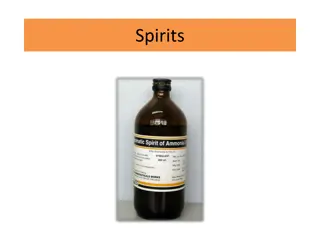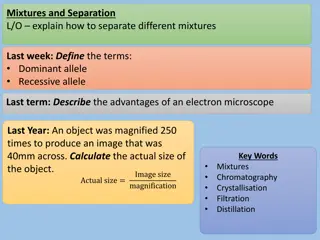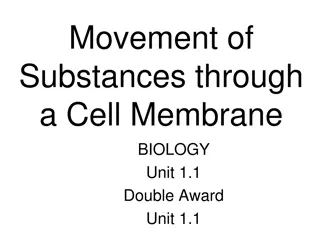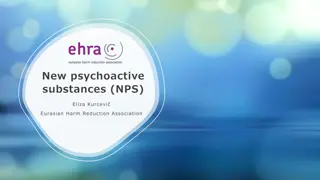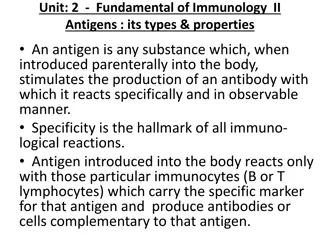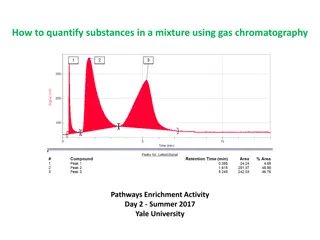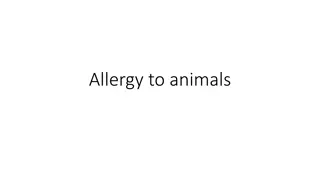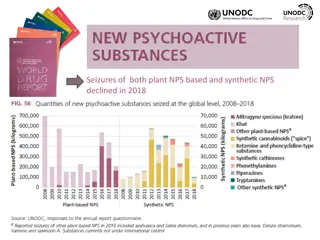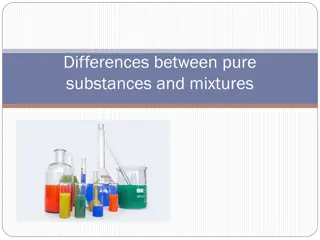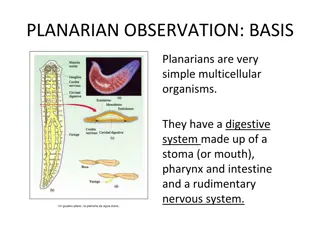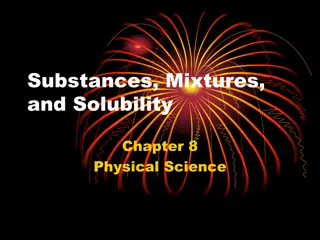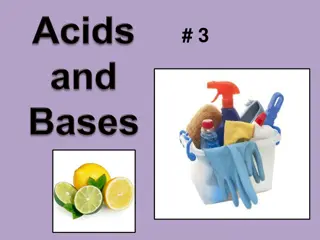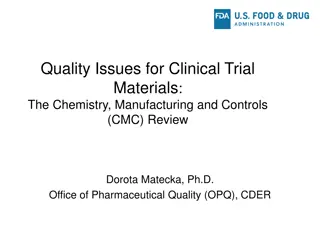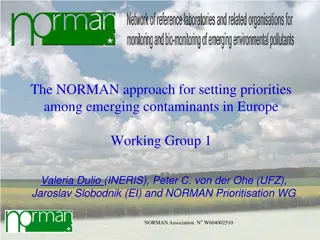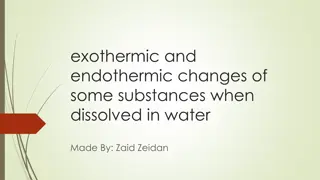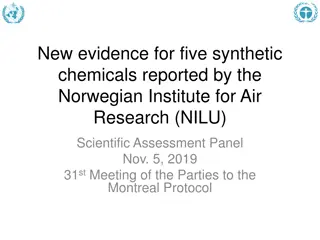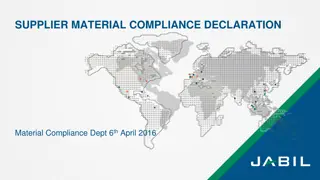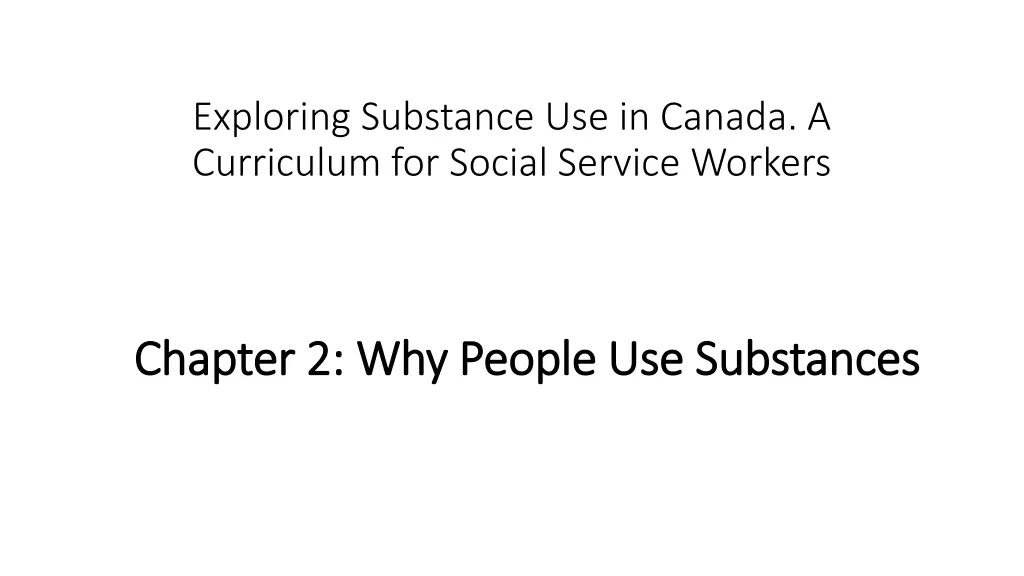
Understanding Substance Use in Canada
Explore the reasons behind substance use and substance use disorders in Canada, including cultural, traditional, and psychological aspects. Learn about the continuum of substance use, physical and psychological dependency, and key risk and protective factors. Discover why people use substances and the impact of substance use disorder on individuals.
Download Presentation

Please find below an Image/Link to download the presentation.
The content on the website is provided AS IS for your information and personal use only. It may not be sold, licensed, or shared on other websites without obtaining consent from the author. If you encounter any issues during the download, it is possible that the publisher has removed the file from their server.
You are allowed to download the files provided on this website for personal or commercial use, subject to the condition that they are used lawfully. All files are the property of their respective owners.
The content on the website is provided AS IS for your information and personal use only. It may not be sold, licensed, or shared on other websites without obtaining consent from the author.
E N D
Presentation Transcript
Exploring Substance Use in Canada. A Curriculum for Social Service Workers Chapter 2: Why People Use Substances Chapter 2: Why People Use Substances
1. Define substance use 2. 3. 4. Define substance use disorder Discuss aspects of substance use Discuss aspects of substance use disorders Explore the role of substance use as culture/tradition Describe the continuum associated with substance use Define physical and psychological dependency Learning Objectives 5. 6. 7.
Why Do People Use Substances? https://youtu.be/J2OcFc-_bac (City of Hamilton, 2019).
Reasons why people use Reasons why people use psychoactive substances: psychoactive substances: Medical Religion Enjoyment Psychoactive substances have been a part of human history for thousands of years, as a species, humans have a fascination with any psychoactive agent that alters our basic perception of our environment (Csiernik, 2015, p. 14). This Photo by Unknown Author is licensed under CC BY-NC
What is a Substance Use Disorder (SUD)? According to the American Psychiatric Association (2013) it is a pattern of symptoms resulting from the use of a substance that you continue to take, despite experiencing problems as a result (p. 175). No single factor determines whether a person will develop a substance use disorder (Schwab, 2021). The more risk factors a person has, the greater the chance that taking substances may lead to substance use and a SUD.
Key Risk and Protective Factors for Substance Use Catagories/Domains Risk Factors Protective Factors Community disorganization Laws and norms favorable to drug use Perceived availability of drugs Community cohesion Community norms not supportive of drug use Community Academic failure Little commitment to school Participation in school activities School bonding School Parental attitudes favorable to drug use Poor family management Family history of antisocial behavior Family sanctions against use Positive parent relationships Family Early initiation of antisocial behavior Attitudes favorable to drug use Peer drug use Positive peer relationships Network of non-drug using peers Peer/Individual (Public Safety Canada, 2018).
Exploring the power of protective factors in lifetime wellness. https://youtu.be/1Hj06BlVrnI (Canadian Centre on Substance Use and Addiction, 2021).
Social Service workers may have the opportunity to explore an individual s journey, using your individual helping skills. What types of interventions might you explore based on what you know about why people use substances? This Photo by Unknown Author is licensed under CC BY
Why do people continue to use substances, as part of a substance use disorder? Every time a person uses a substance (repetition) it causes a reaction in both the body (physical) and the mind (psychological) The substance use is pleasurable, and the repetition can work like an enforcer, drilling those habits deeper and deeper. Through the repetition of use and the reinforcement of the habit, this can make the substance use a very difficult habit to break The habit may become both physical and psychological.
What is Physical Dependence? A physiological state of cellular adaptation occurring when the body becomes so accustomed to a drug that it can only function normally when the drug is present (Csiernik, 2015, p. 19). Without the substance in the body, the body simply does not function normally .
People who have a substance use disorder may experience withdrawal symptoms including: - Shaking or trembling - Nausea - Cramping What is Withdrawal Muscle spasms Withdrawal can range from discomfort to death, depending on how long and often a person was using a substance, and the type of substance a person is using. Tolerance is the body s adaption to the presence of the drug requiring increased amounts to produce the same outcome as originally experienced (Csiernik, 2015, p. 29). Over time it takes more of the substance or drug to produce the same feeling
What is Psychological Dependence? A drug becomes so important to a person s thoughts or activities that the person believes that he or she cannot manage without the substance (Csiernik, 2015, p. 20). A psychological dependence is the mind need for a substance. Psychological dependence is just as intense as physical dependence, if not more so.
Did you Know There is also the belief that persons with substance use disorders suffer in the extreme with their feelings, either being overwhelmed with painful affects or seeming not to feel their emotions at all. Substances of abuse help such individuals to relieve painful affects or to experience or control emotions when they are absent or confusing. (Khantzian, 1997, p. 231). This Photo by Unknown Author is licensed under CC BY
Withdrawal can be quite painful, particularly for people who are using opiates. https://youtu.be/Zks_fdt-aHY (Canadian Press, 2016).
Note the language used in the video you just watched. What did you notice? What were the physical symptoms of withdrawal John discussed? What were the psychological symptoms of withdrawal John mentioned?
Psychoactive Substances Dependence Chart Stimulants Depressants Dangers and side effects Psychological dependence Physical dependence Addiction potential Drug Dangers and side effects Psychological dependence Physical dependence Addiction potential Drug Caffeine May create dependence Low Low Low Alcohol Impaired judgment, loss of coordination, dizziness, nausea, and eventually a loss of consciousness Moderate Moderate Moderate Nicotine Has major negative health effects if smoked or chewed High High High Cocaine Decreased appetite, headache Low Low Moderate Amphetamines Possible dependence, accompanied by severe crash with depression as drug effects wear off, particularly if smoked or injected Moderate Low Moderate to high Barbiturates and benzodiazepines Sluggishness, slowed speech, drowsiness, in severe cases, coma or death Moderate Moderate Moderate Toxic inhalants Brain damage and death High High High (Schwab, 2021).
Opioids Hallucinogens Dangers and side effects Psychological dependence Physical dependence Addiction potential Drug Dangers and side effects Psychological dependence Physical dependence Drug Addiction potential Opium Side effects include nausea, vomiting, tolerance, and addiction. Moderate Moderate Moderate Marijuana Mild intoxication; enhanced perception Low Low Low Morphine Restlessness, irritability, headache and body aches, tremors, nausea, vomiting, and severe abdominal pain High Moderate Moderate LSD, mescaline, PCP, and peyote Hallucinations; enhanced perception Low Low Low Heroin All side effects of morphine but about twice as addictive as morphine High Moderate High (Schwab, 2021).
When we think about substance use and withdrawal, we may immediately go to substances we see in the media, like heroin and cocaine. Take a moment and ask yourself these few questions: Are you a regular coffee drinker? Have you ever tried to give up coffee? Did you experience any symptoms? Do you smoke tobacco? Have you tried quitting? What was that like? This Photo by Unknown Author is licensed under CC BY-NC- ND
Factors that make people vulnerable or resilient to a substance use disorder: Positive self-image Self-control Social competence Chronic illness Poverty Homelessness (Mawani & Gilmour, 2010).
There is a direct correlation between mental health disorders and substance use disorders. The difference between mental health and a mental health disorder, for example, depression, is that the mental health disorder is a diagnosable illness, like a substance use disorder. Healthcare practitioners use the DSM-V to diagnose mental health disorders, like substance use disorders.
People who have a concurrent disorder may experience a combination of problems, such as: Anxiety disorder and an alcohol problem Schizophrenia and cannabis dependence Borderline personality disorder and heroin dependence Bipolar disorder and problem gambling (Centre for Addiction and Mental Health, 2021, para. 1).
Concurrent disorders and the importance of support for improved health outcomes: https://youtu.be/lWhmc0tAuqc (Royal Talks, 2019).
According to the Mental Health Commission of Canada (2021), people living with mental illness are twice as likely as other Canadians to experience problematic substance use (para. 1). Buckley et al. (2009) suggest at least 50% of people who have been diagnosed with schizophrenia have a co-occurring substance use disorder. 70% of mental health problems have their onset during childhood or adolescence (Government of Canada, 2006, para.) making substance use among youth especially problematic. Early intervention programs that diagnose mental health disorders, along with programs to improve mental health, reduce risks for developing a substance abuse disorder Concurrent Disorders:
Health Canadas focus on helping to prevent, treat or reduce the harms associated with opioids, stimulants, alcohol, prescription drugs, and other potentially harmful substances: Promoting mental health Preventing mental health disorders Preventing substance use (Government of Canada, 2021). This Photo by Unknown Author is licensed under CC BY-SA
How can Social Service Workers Help? It is important to be aware of any diagnosis your client may have. This will help you direct clients to appropriate services for their health Ensure individuals with concurrent disorders have access to appropriate resources, and the resources are working in collaboration.
We can use the Transtheoretical Model of Change or the Stages of Change to Change interventions are especially useful in addressing lifestyle modification for disease prevention, long-term disease management and addictions (Zimmerman et al., 2000, para. 9). help?
Note the arrows. There is no beginning or end; this is because people can start making changes at any time. People may also skip through stages. When using this model, it is important to be nonjudgmental and supportive at each stage. (Lunn et al, 2017).
Stages Of Change Pre-contemplation: This is the stage where you are doing what you do, without considering making any changes. You may feel comfortable or confident in the choices you are making. You may also see your choices as helpful. In the context of substance use, we know people use substances for many reasons. Imagine someone who has experienced trauma and is using substances to cope. In pre- contemplation they may see their substance use as the only way to cope, in which case they are not prepared to make a change. They may have also tried changing many times and have simply given up. Contemplation: In this stage, people have acknowledged there is a habit or a behaviour that is not a healthy behaviour, but they are not yet prepared to make a change. The thought of making a change may cause a person to begin to feel pain. This could be fear of the loss of the behaviour, it could be fear of withdrawal. At this stage you may see individuals develop barriers to change, for example using terms like I know, but . The person may also see the benefits of change but are ambivalent about making that change.
Stages Of Change Action: Decision (also called Preparation): In this stage, the behavior has been acknowledged and the person has made the decision to make a change. You have helped your client set goals, now they are going to do the work to achieve them. It may be a small change, for example, a reduction in the amount of substance used, or the type, it could be a change in behavior (safer injection). This can be the easy period in some cases, there is excitement and hope. In the first few days of the action phase, people with substance use disorders should receive a lot of encouragement. Whatever the change, it is exciting to get to this stage, as it is a critical stage for a person with a substance use disorder. The person has moved from ambivalence to planning to change. This may be the first time or the fiftieth time a person has tried to change their behavior; every time should be praised. This is also a critical stage for you, the Social Service worker. This is an opportunity to reflect on the behavior of the individual and develop a set of goals. Starting small is helpful, rather than going cold turkey . Whatever the goal is, it is the choice of the individual and respecting the goal is paramount to building a relationship. The preparation stage is simply planning, so using a SMART goal model may be helpful.
Stages Of Change Maintenance: This is the make-or-break stage, as the person with the substance use disorder is maintaining their behavioural change, whether a reduction in the amount of substance use, a reduction in risky behaviours, a change in substances or whatever their initial goal was. Continuing to encourage and praise is helpful in this stage. Peer support can be very helpful in the maintenance phase, and programs like AA and NA that use a peer support model that allow for check in s can be helpful for some people. Being able to provide appropriate referrals to other services is helpful in the maintenance phase. Relapse: Relapse is part of substance use disorders, which is why it is part of the model. While we want to help people prevent relapse, depending on their life circumstances, relapse may happen frequently or infrequently. We are there to help individuals understand that relapse is ok, and don t quit quitting! If we discourage an individual, they may give up entirely. The reality is many individuals will go through the stages of change more than once. Just like you, it takes time to make a change. Reflect on your habits and any habits you have tried to change. If you were successful the first time, congratulations! If not, you re human!
Stages of Change to help people quit smoking: https://youtu.be/nyIJo7VCdPE (Centre for Addiction and Mental Health, 2013).
Self Care Please complete the self care module and report back next class.
References American Psychiatric Association. (2013). Diagnostic and statistical manual of mental disorders (5th ed.). https://doi.org/10.1176/appi.books.9780890425596 Boston University School of Public Health. (2019). The transtheoretical model (stages of change). https://sphweb.bumc.bu.edu/otlt/mph- modules/sb/behavioralchangetheories/behavioralchangetheories6.html Buckley, P. F., Miller, B. J., Lehrer, D. S., & Castle, D. J. (2009). Psychiatric comorbidities and schizophrenia, Schizophrenia Bulletin, 35(2), 383 402. https://doi.org/10.1093/schbul/sbn135 Canadian Centre on Substance Use and Addiction. (2021). Community connections supporting lifetime wellbeing. [Video]. Youtube. https://www.youtube.com/watch?v=1Hj06BlVrnI Canadian Mental Health Association. (2018, December 4). Concurrent mental illness and substance use problems. https://cmha.ca/brochure/concurrent-mental-illness-and-substance-use-problems/ Canadian Press. (2016, December 21). You think you re dying : Ex-Heroin user on withdrawal. [Video]. YouTube. https://youtu.be/Zks_fdt- aHY Centre for Addiction and Mental Health. (2021). Concurrent disorders. https://www.camh.ca/en/health-info/mental-illness-and-addiction- index/concurrent-disorders Centre for Addiction and Mental Health. (2013). Quitting smoking is a journey. [Video]. Youtube. https://www.youtube.com/watch?v=nyIJo7VCdPE Csiernik, R. (2015). Substance use and abuse: Everything matters (2nd ed). Canadian Scholars Press. Government of Canada. (2021). Substance use and addictions program. https://www.canada.ca/en/health-canada/services/substance-use/canadian-drugs- substances-strategy/funding/substance-use-addictions-program.html#wb-auto-4 Khantzian, E. J. (1997). The self-medication hypothesis of substance use disorders: A reconsideration and recent applications. Harvard Review of Psychiatry, 4(5) 231-244. https://pubmed.ncbi.nlm.nih.gov/9385000/
References Lunn, S., Restrick, L. & Stern, M. (2017). Managing respiratory disease: The role of a psychologist within the multidisciplinary team. Chronic Respiratory Disease, 14, 45-53. https://www.researchgate.net/figure/Stages-of-change-model-as-in-the-study-of-Prochaska-and-DiClemente- 56_fig1_314110814 Mawani, F. N., & Gilmour, H. (2010). Validation of self-rated mental health. Statistics Canada. https://www150.statcan.gc.ca/n1/en/pub/82-003- x/2010003/article/11288-eng.pdf?st=SgFoG2gh Mental Health Commission of Canada (2021). Mental health and substance use. https://mentalhealthcommission.ca/what-we-do/mental-health-and- substance-use/ Public Safety Canada. (2018). School-based drug abuse prevention: Promising and successful programs. https://www.publicsafety.gc.ca/cnt/rsrcs/pblctns/sclbsd-drgbs/index-en.aspx Schwab, J. (2021). Drugs, health & behaviour. Pressbooks. https://psu.pb.unizin.org/bbh143/chapter/altering-consciousness-with-psychoactive-drugs/ Substance and Mental Health Services Association. (n.d.). Risk and protective factors. https://www.samhsa.gov/sites/default/files/20190718-samhsa- risk-protective-factors.pdf Royal Talks. (2019). Connections between substance use & mental health and identifying ways of getting help. [Video]. Youtube. https://www.youtube.com/watch?v=lWhmc0tAuqc Zimmerman, G. L., Olsen, C. G., & Bosworth, M. F. (2000). A Stages of change approach to helping patients change behavior. American Family Physician, 61(5), 1409-1416. https://www.aafp.org/afp/2000/0301/p1409.html

